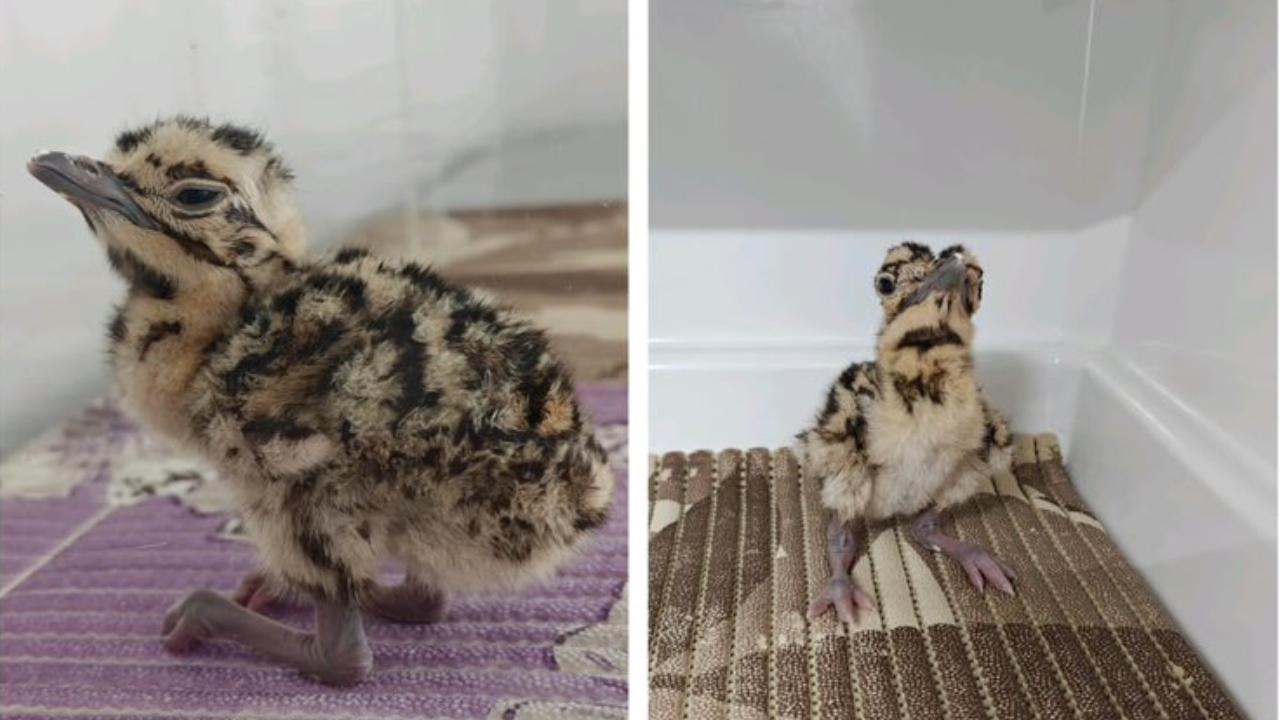The eggs, laid by four different females after artificial insemination, hatched on April 19, April 23, April 27, and May 1. With these additions, the total number of chicks bred in the 2025 season has reached 15

Pic/Wildlife Institute of India (WII)
In a significant boost to conservation efforts, four new Great Indian Bustard chicks have been successfully hatched under the Project Great Indian Bustard (Project GIB) at the national conservation breeding centres in Jaisalmer over the past two weeks.
The eggs, laid by four different females after artificial insemination, hatched on April 19, April 23, April 27, and May 1. With these additions, the total number of chicks bred in the 2025 season has reached 15, raising fresh hopes for the future rewilding of this critically endangered species.
According to the Ministry of Environment, Forest and Climate Change (MoEF&CC), studies conducted by the Wildlife Institute of India estimate that only around 150 Great Indian Bustards remain in the wild. Of these, approximately 128 are found in Rajasthan, with fewer than 10 individuals each in Gujarat, Maharashtra, Andhra Pradesh, and Karnataka.
MoEF&CC has undertaken a dedicated conservation breeding initiative in collaboration with the Forest Departments of Rajasthan, Gujarat, and Maharashtra, with technical support from the Wildlife Institute of India, Dehradun. In 2022, the ministry, with financial backing from the National Authority for Compensatory Afforestation Funds, approved an outlay of Rs 33.85 crore over five years for a comprehensive programme titled ‘Habitat Improvement and Conservation Breeding of the Great Indian Bustard – An Integrated Approach’.
The primary goal of the programme is to establish a stable captive population of Great Indian Bustards and facilitate the release of chicks into the wild to help rebuild the species' numbers. It also aims to strengthen in-situ conservation efforts to protect and restore natural habitats for the birds.
 Subscribe today by clicking the link and stay updated with the latest news!" Click here!
Subscribe today by clicking the link and stay updated with the latest news!" Click here!








